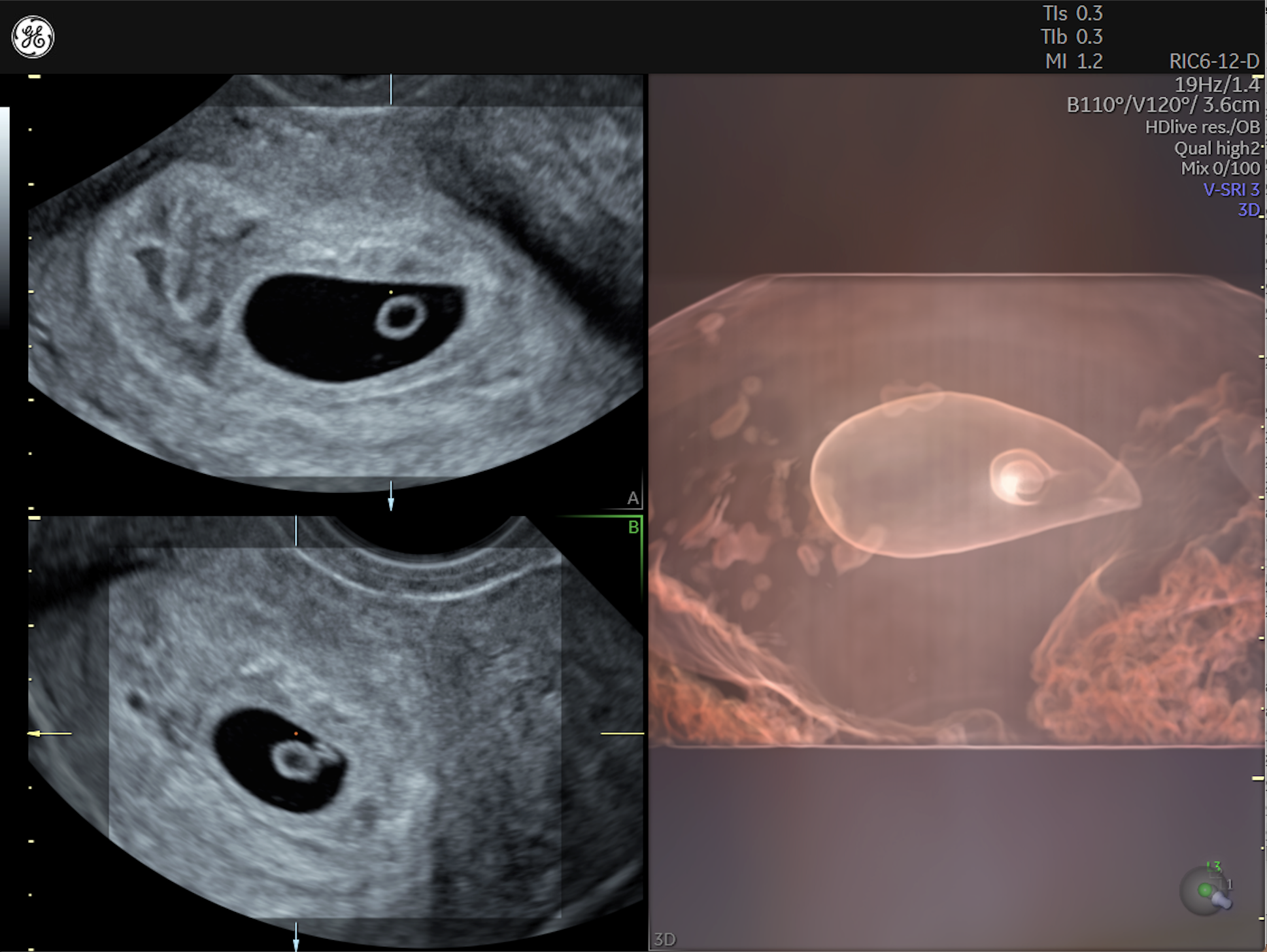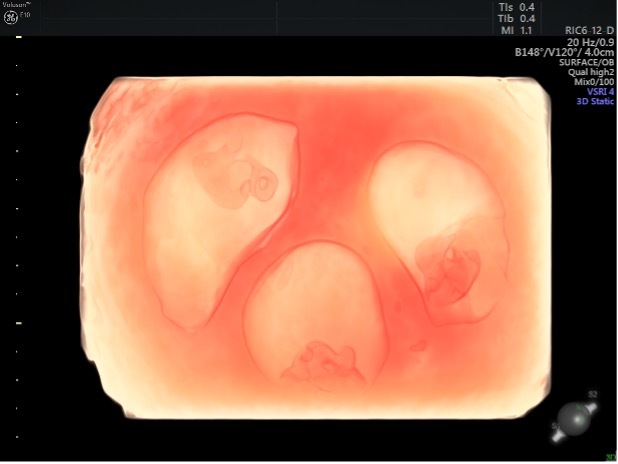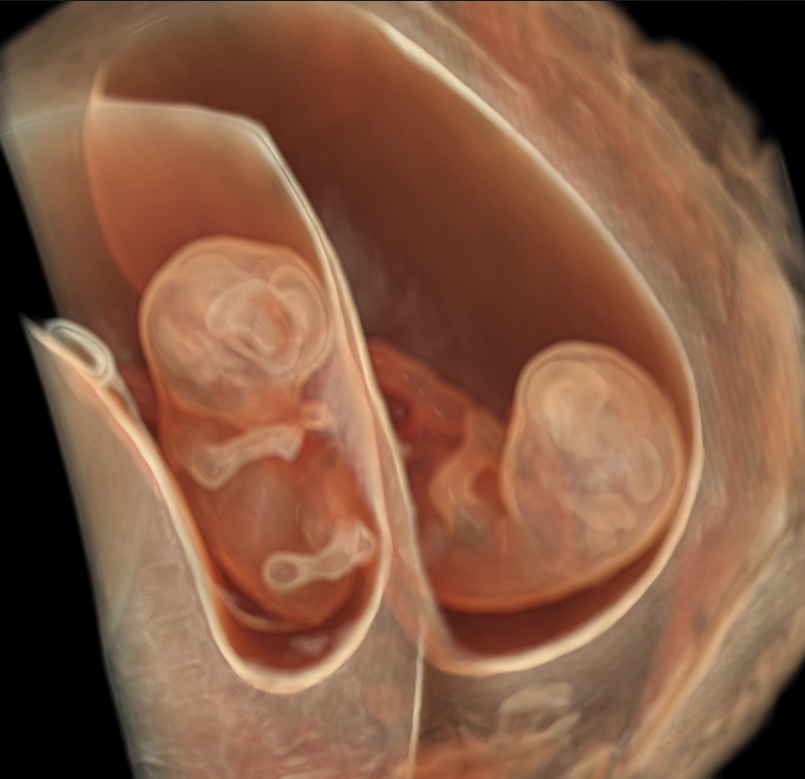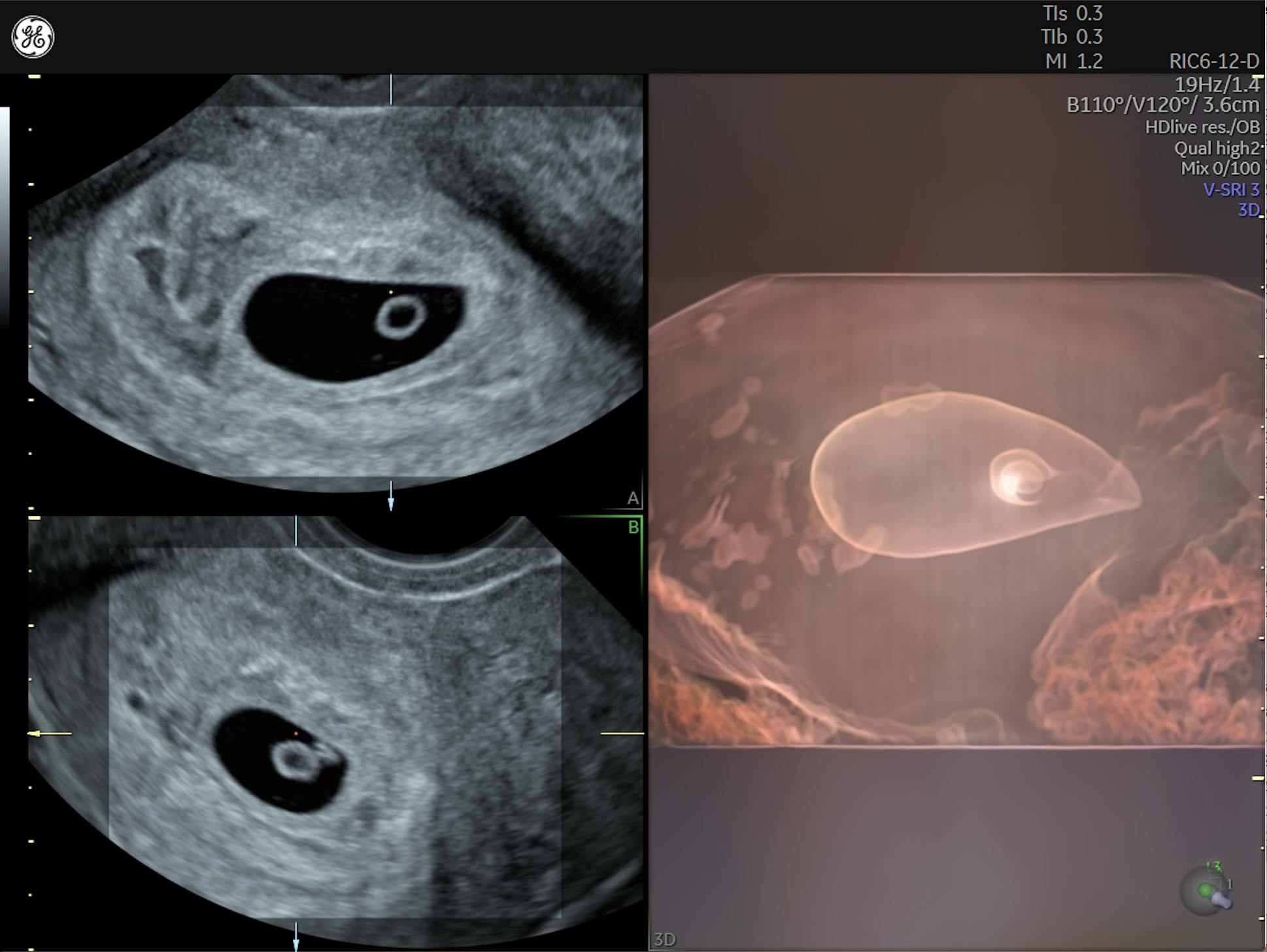With rare exceptions, transvaginal ultrasound (TVU) in pregnancy is the preferred imaging tool to use in the first trimester.
Compared with transabdominal ultrasound, TVU is more likely to conclusively identify the location of early pregnancy, assist in determining viability, provide more accurate dating and assist in determining chorionicity of multiples while also supporting basic anatomic evaluations such as nuchal translucency.
Why Is TVU the Ideal Tool for Most First-Trimester Screenings?
A transabdominal probe is placed on the abdomen, some distance from the protected uterus deep in the pelvis. An ultrasound's vaginal probe has a higher frequency and can obtain a closer view of the pelvic organs under examination, allowing for crisper and clearer images.
Beyond image quality, there is a range of reasons clinicians might reach for this tool over others.
Thorough Inspections
TVU allows for more careful inspection of the uterus, ovaries and cervix, including:
- The presence, location and number of fibroids.
- The persistence of adnexal masses.
- The presence of free fluid in the pouch of Douglas.
- The cervical length.

Early pregnancy and IUD, Voluson™.
Precise Measurements
TVU also offers more precise measurements and details. Minute details such as the sequential identification of the gestational sac, yolk sac, amnion and the presence of an embryo help assess the location and viability of early pregnancy — especially in patients with pain, bleeding or a history of previous pregnancy loss.

Confidently explore fetal images in the earliest stages with the RIC6-12 high-frequency probe, Voluson ™.
Reliable Dating
Although traditional dating using the last menstrual period (LMP) provides an estimate of gestational age (GA), ultrasound measurement of the crown-rump length is the most reliable tool for establishing GA. Ultrasound should take precedence if there is more than a five-day difference compared with the GA as determined by the LMP.
Fetal Anomaly Detection
Major fetal concerns such as anencephaly, cystic hygromas, gross limb and body-stalk anomalies can be more facilely identified on TVU in the first trimester. The presence of twins or higher order multiples, their chorionicity and even the presence of conjoined twins are readily distinguished via first-trimester TVU.

Triplets, 7 weeks

Twins, 9 weeks
When Might a Clinician Decide Against a TVU?
Some cases may warrant a transabdominal approach rather than a transvaginal one, including when:
- Patients have any type of female genital mutilation.
- Patients have any kind of vaginal obstruction.
In most situations, transvaginal ultrasound in the first trimester is typically the ideal imaging tool for examinations, measurements and diagnoses. TVU supports accurate results to promote more effective delivery of compassionate obstetric care.





